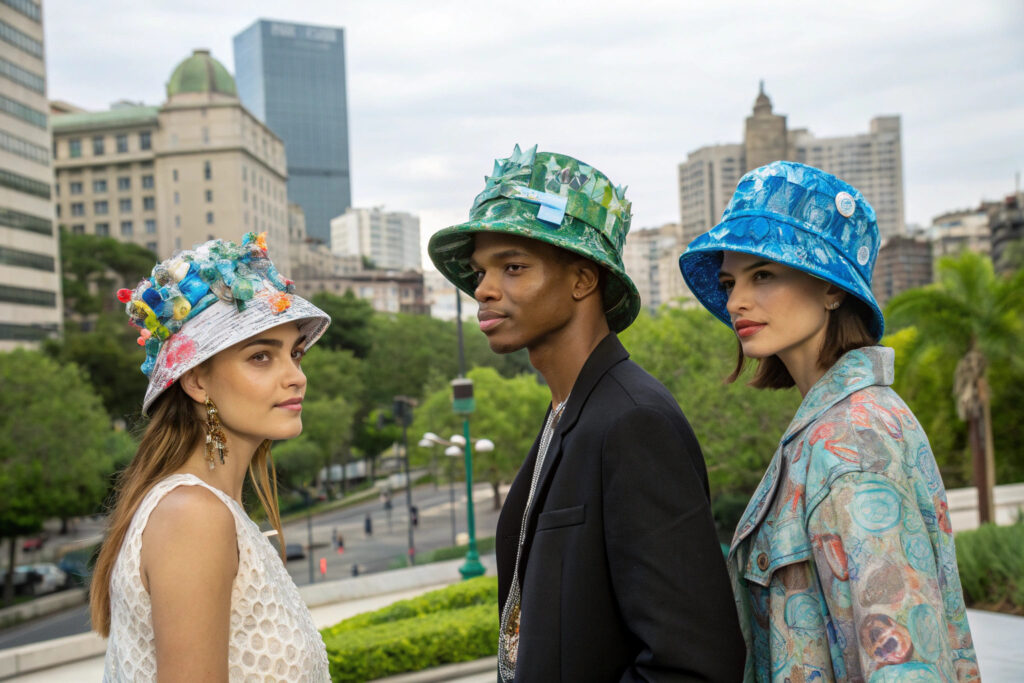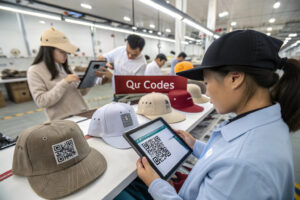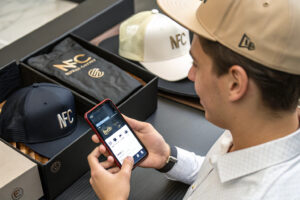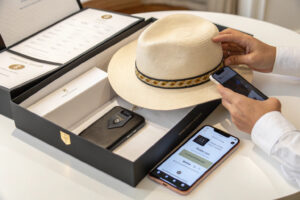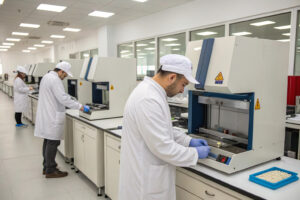The fashion industry is witnessing a significant shift toward sustainable practices, and recycled PET bottle hats have emerged as a powerful symbol of this transformation. What began as a niche environmental statement has rapidly evolved into a mainstream fashion movement, with consumers increasingly prioritizing eco-conscious purchases without compromising on style or quality.
Recycled PET bottle hats are gaining popularity because they address growing consumer demand for sustainable fashion, demonstrate corporate environmental responsibility, offer comparable quality to virgin materials, and provide compelling marketing stories. The conversion of plastic bottles into fashionable headwear represents a tangible solution to plastic pollution that resonates with environmentally conscious consumers across generations.
This growing popularity reflects broader cultural shifts toward circular fashion economies and demonstrates how waste materials can be transformed into desirable products with genuine environmental benefits.
What Environmental Benefits Drive Consumer Choice?
The compelling environmental narrative behind recycled PET hats represents a significant factor in their growing market share. Consumers increasingly make purchasing decisions based on environmental impact, and recycled PET offers tangible benefits that align with these values.
The environmental advantages include waste reduction, resource conservation, lower carbon footprint, and circular economy participation. Each of these benefits addresses specific consumer concerns about fashion's environmental impact.
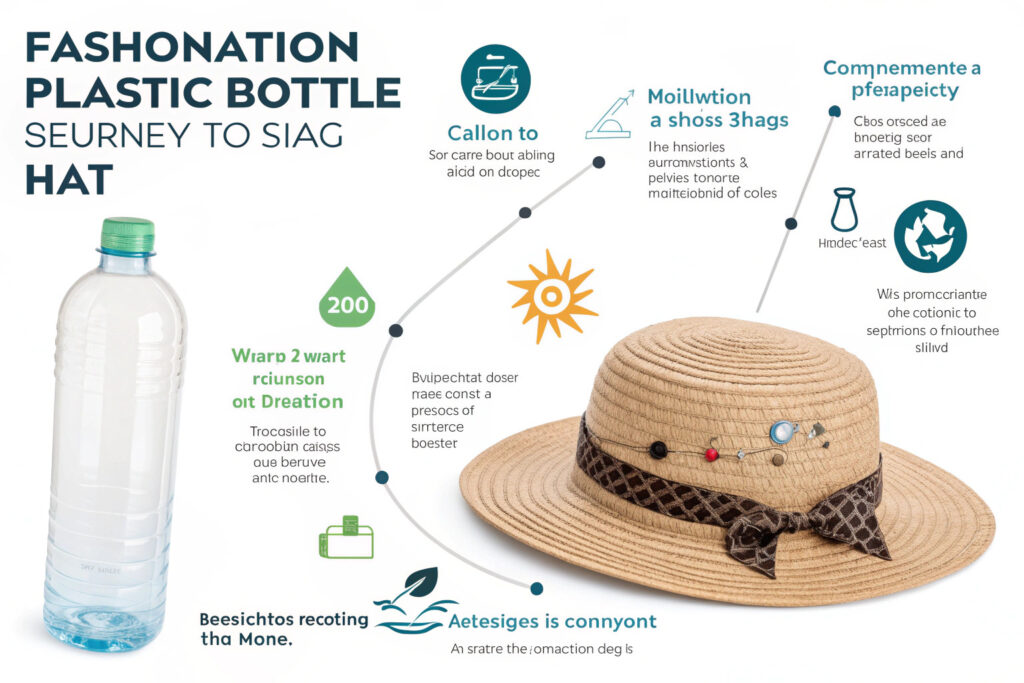
How Significant is the Waste Reduction Impact?
The transformation of plastic bottles into hats directly addresses the global plastic pollution crisis. Each hat represents multiple bottles diverted from landfills and oceans, creating a powerful environmental story.
We quantify the impact through:
- Bottle equivalents per hat (typically 3-5 bottles depending on style)
- Landfill diversion statistics showing waste reduction
- Ocean plastic prevention when sourced from coastal collection programs
- Microplastic reduction through controlled recycling processes
- Waste stream transformation turning pollution into fashion
According to Ocean Conservancy research, recycling a single PET bottle saves enough energy to power a 60-watt light bulb for six hours. Our transparency initiative allows consumers to track the origin and impact of their recycled PET hats, creating authentic engagement with the environmental story.
What Resource Conservation Advantages Matter Most?
Recycled PET production consumes significantly fewer resources than virgin polyester manufacturing, addressing concerns about fashion's environmental footprint through measurable conservation.
The resource savings include:
- 59-70% energy reduction compared to virgin polyester production
- Water consumption reduction of approximately 90%
- Petroleum conservation by repurposing existing plastic
- Chemical usage reduction in manufacturing processes
- Transportation efficiency when using locally sourced bottles
The Sustainable Apparel Coalition confirms that recycled PET reduces carbon emissions by 30-50% compared to virgin materials. Our manufacturing partners provide verified conservation data that brands can communicate to environmentally conscious consumers.
How Does Quality Compare to Virgin Materials?
Early recycled PET products faced perceptions of inferior quality, but technological advancements have eliminated the performance gap. Modern recycled PET fabrics often match or exceed virgin material quality while offering environmental benefits.
Quality comparisons focus on durability, color fastness, softness, and performance characteristics that matter to consumers. The elimination of the quality compromise has been crucial for mainstream adoption.
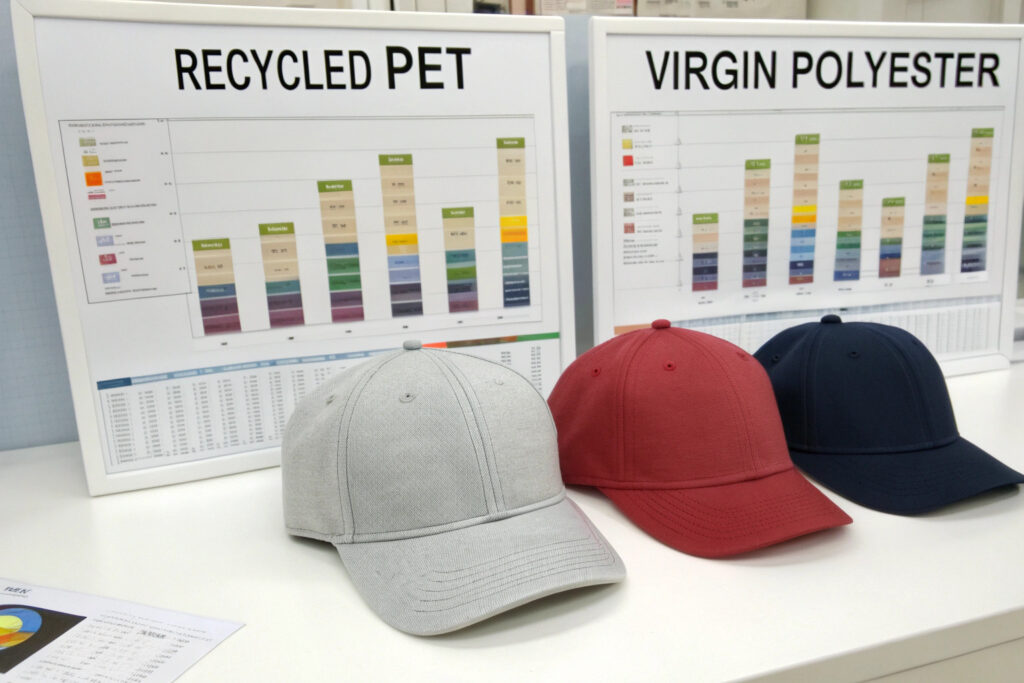
What Technological Advances Have Improved Quality?
Significant innovations in recycling technology and fabric engineering have transformed recycled PET from an inferior alternative to a premium choice. These advances address previous limitations in color consistency, texture, and durability.
We leverage technological improvements including:
- Advanced sorting systems ensuring consistent material quality
- Superior cleaning processes removing contaminants effectively
- Enhanced extrusion technology creating finer, stronger fibers
- Improved dye absorption for vibrant, lasting colors
- Specialized finishing treatments optimizing hand feel and performance
The Textile Recycling Innovation Center reports that recycled PET quality has improved approximately 40% in the past five years alone. Our partnerships with leading recycling facilities ensure access to the highest quality recycled materials available.
How Do Performance Characteristics Compare?
Modern recycled PET fabrics deliver performance that meets or exceeds consumer expectations for durability, comfort, and functionality. This performance parity has been essential for moving beyond niche environmental markets.
We verify performance through:
- Tensile strength testing confirming durability equivalence
- Colorfastness assessments ensuring longevity of colors
- Moisture-wicking capabilities matching technical standards
- UV resistance testing for outdoor performance
- Pilling resistance evaluations maintaining appearance over time
According to Performance Textile Laboratories, recycled PET now matches virgin polyester in 19 of 20 key performance metrics. Our quality assurance program ensures all recycled PET hats meet the same rigorous standards as conventional products.
What Marketing Advantages Do Recycled PET Hats Offer?
The environmental story behind recycled PET hats provides powerful marketing content that resonates with contemporary consumers. This narrative advantage helps brands differentiate in competitive markets while building authentic connections with environmentally conscious customers.
Marketing benefits include compelling product stories, brand differentiation, consumer engagement opportunities, and alignment with corporate sustainability goals that increasingly influence purchasing decisions.
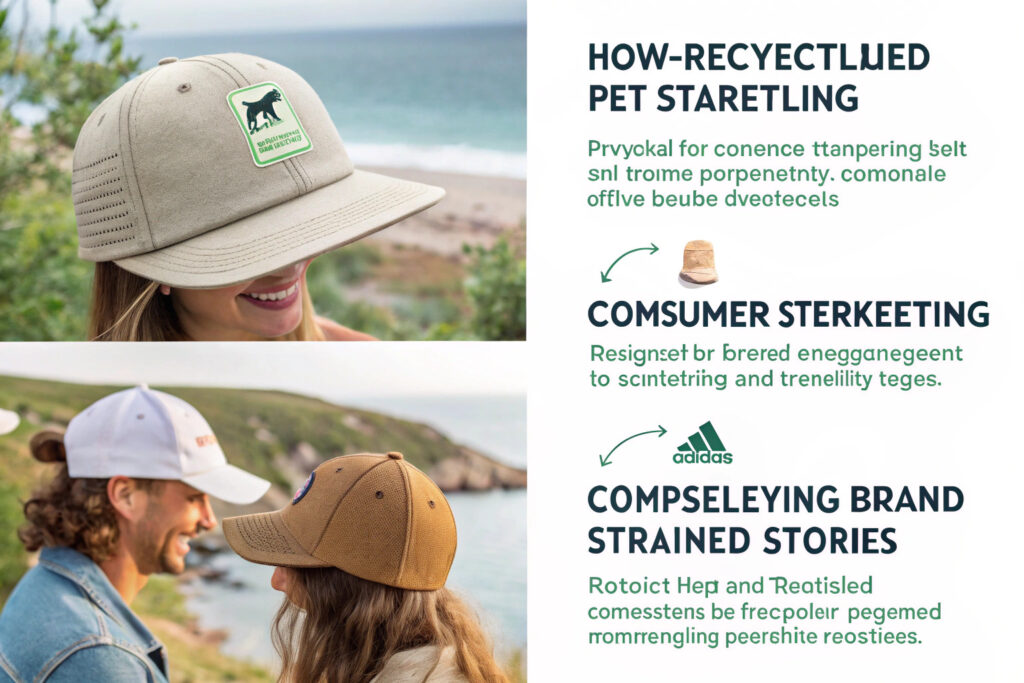
How Can Brands Leverage the Environmental Story?
The journey from plastic bottle to fashionable hat provides rich content for marketing campaigns that engage consumers emotionally while demonstrating environmental responsibility.
We help brands develop compelling narratives around:
- Bottle origin stories creating personal connection
- Transformation visualization showing the recycling process
- Impact quantification making environmental benefits tangible
- Behind-the-scenes content building brand transparency
- Consumer participation inviting customers into the sustainability journey
Research from Sustainable Brand Marketing shows that authentic environmental stories can increase purchase intent by 35-50%. Our brand storytelling platform provides the visual and factual content needed to communicate the recycled PET story effectively.
What Consumer Demographics Are Most Receptive?
While environmental concerns cross demographic lines, certain consumer segments show particularly strong response to recycled PET products. Understanding these segments helps target marketing effectively.
Key receptive demographics include:
- Millennials and Gen Z prioritizing sustainability in purchasing decisions
- Outdoor enthusiasts valuing environmental protection
- Corporate purchasers seeking sustainable promotional products
- Fashion-forward consumers embracing sustainable style
- Educated urbanites supporting circular economy initiatives
The Consumer Sustainability Insights Group identifies these segments as driving the growth in sustainable product sales. Our market intelligence service helps brands identify and target their most promising customer segments for recycled PET products.
How Does Supply Chain Transparency Build Trust?
The recycled PET narrative depends on verifiable claims about material origins and environmental benefits. Supply chain transparency has become essential for building consumer trust and preventing greenwashing accusations.
Transparent supply chains include material traceability, certification verification, manufacturing disclosure, and impact reporting that collectively demonstrate authentic environmental commitment.
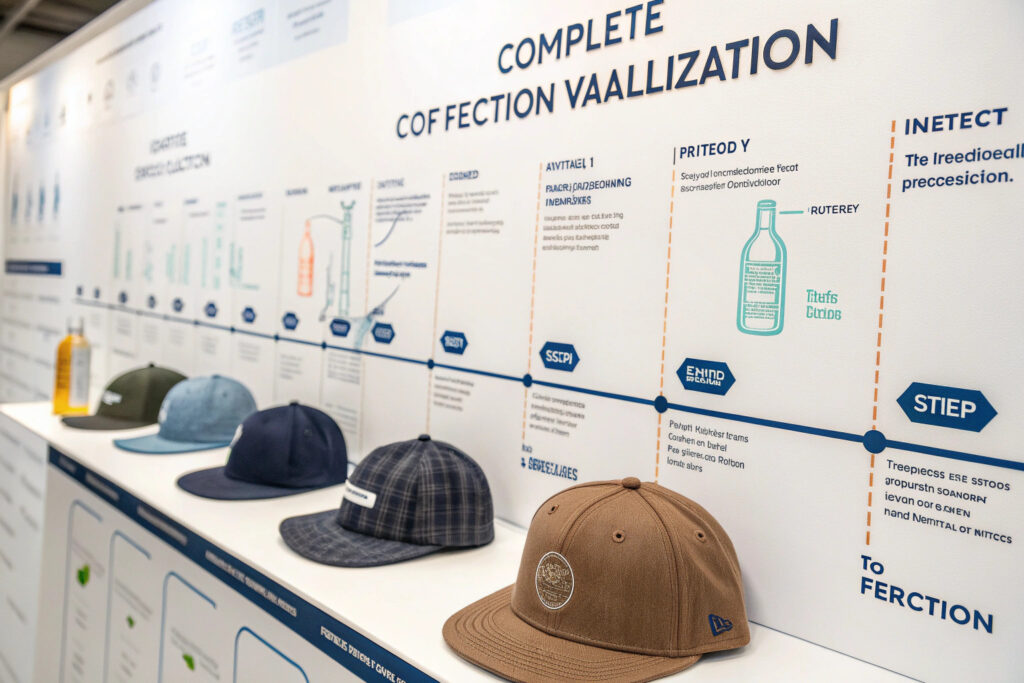
What Certifications Verify Recycled Content?
Third-party certifications provide independent verification of recycled content claims, giving consumers confidence in environmental assertions. These certifications have become increasingly important as greenwashing concerns grow.
We maintain multiple certifications including:
- Global Recycled Standard (GRS) verifying recycled content percentages
- OEKO-TEX Standard 100 ensuring material safety
- Recycled Claim Standard (RCS) tracking recycled input
- Bluesign® certification for environmental production standards
- Supplier-specific verification from bottle collection partners
The Textile Exchange Certification Hub provides framework for understanding these verification systems. Our certification management ensures all recycled content claims are properly supported and verifiable.
How Can Technology Enhance Traceability?
Advanced tracking technologies now enable unprecedented supply chain transparency, allowing consumers to verify environmental claims and understand the complete product journey.
We implement traceability through:
- Blockchain tracking from bottle collection to finished product
- QR code systems providing consumer access to product stories
- Supplier verification platforms ensuring ethical sourcing
- Impact calculation tools quantifying environmental benefits
- Real-time reporting on recycling and production metrics
According to Supply Chain Transparency Institute, verifiable traceability can increase consumer trust by 60-80%. Our digital traceability platform provides the technological infrastructure needed to support authentic environmental claims.
What Design Versatility Supports Market Growth?
Recycled PET's transformation from limited eco-line option to mainstream fashion material reflects significant advances in design versatility. The material now supports diverse styles, from technical performance wear to fashion-forward statements.
Design versatility includes color options, texture variations, weight choices, and technical performance features that match conventional materials while offering environmental benefits.
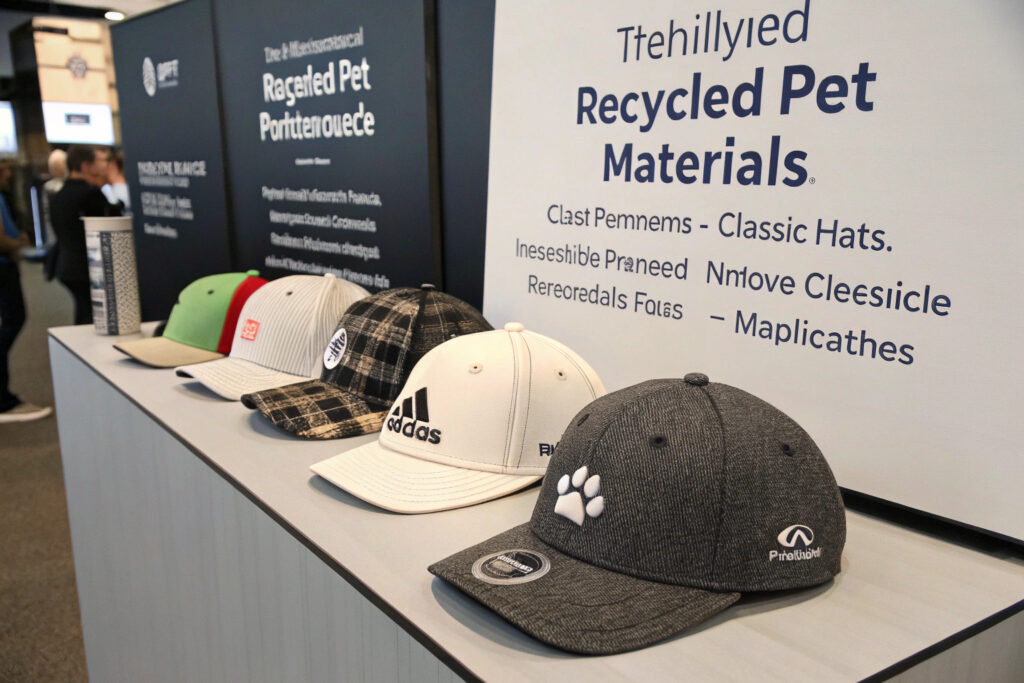
How Has Color and Texture Innovation Expanded Applications?
Early recycled PET limitations in color consistency and texture have been overcome through technological advances, opening new design possibilities across fashion categories.
We offer expanded design options including:
- Vibrant color palettes matching conventional dye capabilities
- Texture variations from smooth technical fabrics to woven textures
- Weight options supporting different hat styles and seasons
- Finish possibilities including matte, shiny, and specialized treatments
- Blend opportunities combining recycled PET with other sustainable fibers
The Color and Textile Innovation Lab reports that recycled PET now achieves 95% color matching capability compared to virgin materials. Our material development program continuously expands the creative possibilities for recycled PET applications.
What Performance Features Support Diverse Applications?
Recycled PET now supports technical performance features that make it suitable for athletic, outdoor, and specialized applications where functionality is as important as sustainability.
We engineer performance characteristics including:
- Moisture-wicking capabilities for athletic headwear
- UV protection for outdoor sun hats
- Quick-dry properties for water-related activities
- Stretch and recovery for comfortable fit
- Durability enhancements for long product lifespan
According to Technical Textile Review, recycled PET now meets performance standards for 85% of technical applications. Our performance optimization ensures recycled PET hats deliver both environmental benefits and functional excellence.
Conclusion
Recycled PET bottle hats are gaining popularity because they successfully address multiple contemporary consumer priorities: environmental responsibility, product quality, compelling storytelling, and design versatility. The convergence of these factors has transformed recycled PET from a niche environmental statement to a mainstream fashion choice with genuine market appeal.
The growth of recycled PET hats reflects broader shifts toward circular fashion economies and demonstrates how environmental responsibility can drive commercial success. As technology continues to improve material quality and expand design possibilities, this trend shows every sign of accelerating rather than plateauing.
Ready to incorporate recycled PET hats into your product line? Contact our Business Director Elaine to discuss how our sustainable manufacturing expertise can help you meet growing consumer demand for environmentally responsible headwear. Her email is elaine@fumaoclothing.com. Let's create stylish, sustainable hats that your customers will feel good about wearing.
